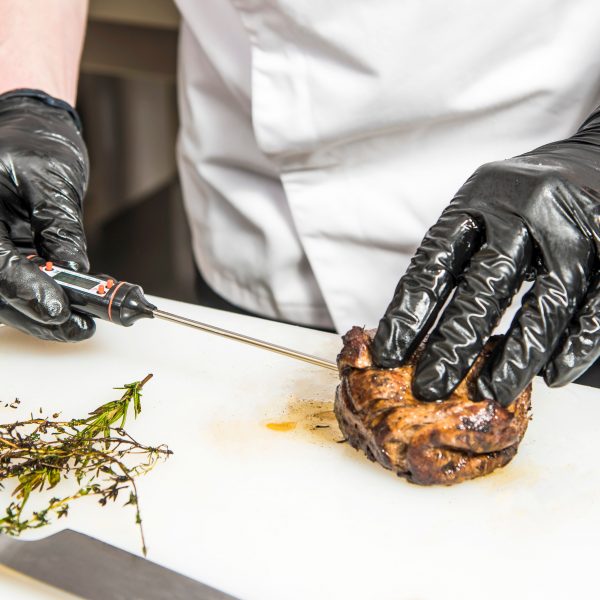Best Practices
Cleaning, cooking, and storage tips to maximize food safety and reduce waste.
CLEAN: Keep cooking and food preparation surfaces clean. Wash cooking utensils between each use. Wash your hands with soap for twenty seconds before eating or preparing food. Wash fruits and vegetables before peeling, cutting or eating. Do not wash meat, poultry, and eggs.
SEPARATE: Prevent cross-contamination by keeping meat, poultry, seafood and eggs separate from ready-to-eat foods. Bacteria from meat, poultry, seafood and eggs can make you sick. Keep these foods separate at the grocery store, in the refrigerator, and while cooking.
COOK: Use a food thermometer and cook foods to the proper temperature. Use the guide below for internal cooking temperatures. Reheat leftovers to 165º. Bacteria multiply quickly in the “Danger Zone” (between 40 and 140 degrees Fahrenheit). Keep hot foods hot (above 140 degrees).
COLD: Keep cold foods cold (below 40 degrees). Refrigerate foods promptly and follow the “two-hour rule”. Refrigerate perishable foods like meat, poultry, seafood and eggs within two hours of cooking or purchasing. Bacteria multiplies quickly at room temperature and even quicker at higher temperatures. If the temperature is greater than 90 degrees, cut the two-hour rule to one hour. Thaw and marinate foods in the refrigerator, not on the counter.
STORE: Proper storage helps keep your food safe and reduces food waste. Use this guide, for proper food storage. Remember, when it doubt, throw it out. You cannot see or smell if a food is unsafe to eat. Never taste food to see if it is safe to eat. The bacteria that causes food-borne illness does not make the food taste bad; you could get really sick.

*Whole cuts of pork (e.g., roasts, loins, chops) also need a 3-minute rest time after removal from the heat source. During these three minutes, the meat’s internal temperature remains constant or continues to rise, which destroys harmful bacteria. Source: FoodSafety.gov


